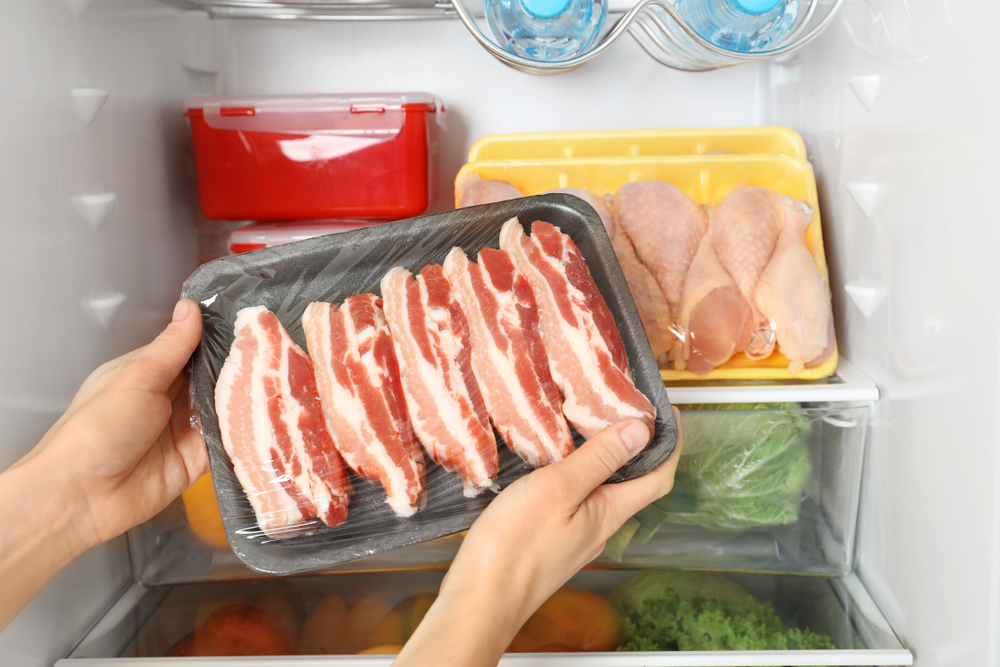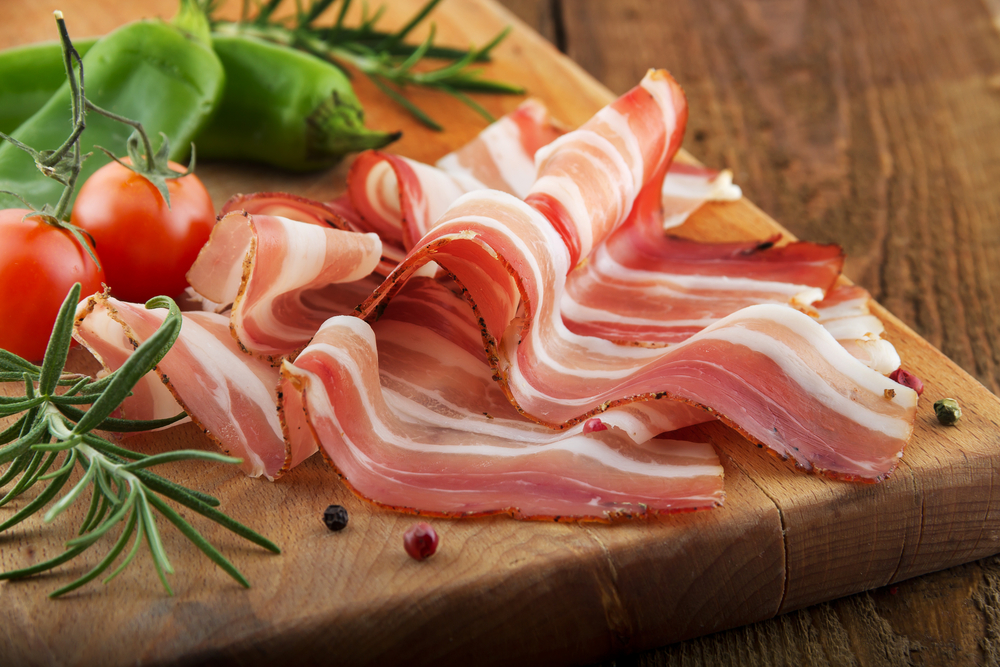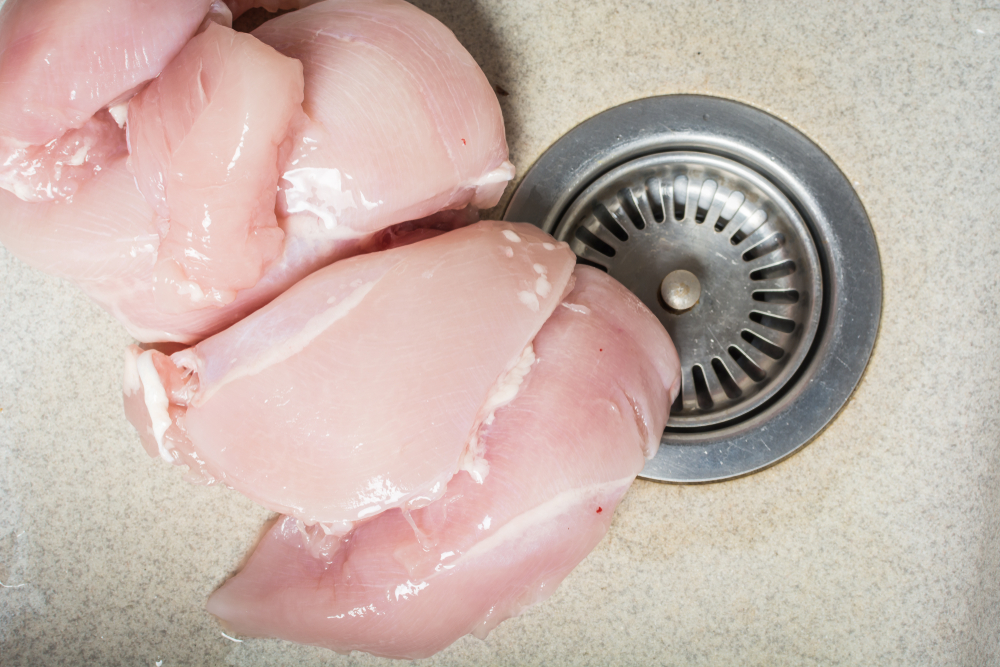Thawing frozen bacon is a crucial step in preparing this popular breakfast food. When done improperly, it can lead to uneven cooking and even foodborne illness.
Fortunately, there are several effective methods to thaw frozen bacon safely and quickly.
Before diving into the methods, it is important to understand why thawing bacon properly matters. Frozen bacon that is not thawed correctly can lead to uneven cooking and an unsatisfying texture.
In addition, improper thawing can increase the risk of foodborne illness by allowing bacteria to grow on the surface of the meat. By taking the time to thaw bacon properly, you can ensure that it is safe to eat and will cook evenly.
Key Takeaways
- Thawing frozen bacon properly is crucial for even cooking and to prevent foodborne illness.
- There are several effective methods to thaw frozen bacon, including in the fridge, in cold water, and in the microwave.
- Following USDA safety guidelines is essential when thawing bacon or any other type of meat.
Why Thawing Bacon Properly Matters

Thawing bacon properly is crucial to avoid the growth of harmful bacteria that can cause food poisoning. Bacteria grow rapidly between 40°F (4°C) and 140°F (60°C), which is known as the danger zone.
If bacon is left to thaw at room temperature or in warm water, it can reach the danger zone, allowing bacteria to multiply and potentially causing foodborne illness.
It is important to note that harmful bacteria can survive freezing temperatures, so simply freezing bacon does not guarantee its safety.
Thawing bacon properly is just as important as cooking it to the correct temperature to ensure that it is safe to eat.
There are several methods for thawing bacon safely, including the refrigerator, cold water bath, and microwave. Each method has its advantages and disadvantages, but all are effective if done correctly.
Thawing bacon in the refrigerator is the safest method as it keeps the bacon at a consistent temperature below 40°F (4°C) and out of the danger zone.
However, this method can take several hours or overnight, so it requires some planning ahead.
A cold water bath is a quicker method for thawing bacon, but it requires more attention to ensure that the water stays cold and the bacon does not reach the danger zone.
It is important to change the water every 30 minutes and to use cold water, not warm or hot water.
Thawing bacon in the microwave is the fastest method, but it can be tricky to get the timing right. It is important to use the defrost setting and to monitor the bacon closely to prevent it from cooking or becoming too hot.
In summary, thawing bacon properly is essential to prevent the growth of harmful bacteria that can cause food poisoning.
The refrigerator method is the safest, but the cold water bath and microwave methods can also be effective if done correctly. It is important to follow proper food safety guidelines to ensure that bacon is safe to eat.
Understanding Frozen Bacon

When it comes to preserving bacon for later use, freezing is a great option. Freezing bacon can extend its shelf life for up to six months, allowing you to enjoy bacon whenever you want.
However, it’s important to understand how to properly freeze bacon to ensure it is safe to consume and maintains its quality.
To freeze bacon, it’s recommended to leave it in its original store-bought packaging. If you want to freeze smaller portions, you can separate the bacon into blocks of 6-10 rashers and freeze them in freezer bags.
Before freezing bacon, make sure to check the expiration date and freeze it before that date.
Once you have frozen bacon, it’s important to know how to properly thaw it. Thawing bacon incorrectly can lead to bacterial growth and foodborne illnesses.
There are a few different methods for thawing frozen bacon, including refrigeration, cold water, and the microwave.
Refrigeration is the safest method for thawing frozen bacon. Place the frozen bacon in the refrigerator and allow it to thaw for 8-12 hours or until it is completely thawed. This method requires planning ahead, as it takes time for the bacon to thaw.
Cold water thawing is another option for thawing frozen bacon. Place the frozen bacon in a leak-proof plastic bag and submerge it in cold water.
Change the water every 30 minutes until the bacon is thawed. This method is faster than refrigeration, but it requires more attention and can be time-consuming.
Microwave thawing is the quickest method for thawing frozen bacon. However, it’s important to use the defrost setting and follow the manufacturer’s instructions to avoid cooking the bacon.
This method can also result in uneven thawing and can affect the texture and quality of the bacon.
In summary, freezing bacon is a great way to preserve it for later use. When freezing bacon, make sure to use proper packaging and freeze it before the expiration date.
When thawing frozen bacon, use the refrigerator, cold water, or the microwave and follow the proper instructions to ensure it is safe to consume and maintains its quality.
Methods to Thaw Bacon

When it comes to thawing frozen bacon, there are a few methods to choose from. Each method has its own benefits and drawbacks, so it’s important to choose the one that works best for your needs.
In this section, we’ll explore three different methods for thawing bacon: refrigerator thawing, cold water thawing, and microwave thawing.
Refrigerator Thawing
Refrigerator thawing is the most common method for thawing bacon. To thaw bacon in the refrigerator, simply remove the frozen bacon from the freezer and place it in the refrigerator.
The bacon should be placed on a plate or in a container to catch any drips.
The refrigerator should be set to a temperature between 33°F and 40°F (0.5°C and 4.4°C) for safe thawing.
It’s important to note that refrigerator thawing can take several hours or even overnight, depending on the thickness of the bacon and the temperature of the refrigerator.
Cold Water Thawing
If you need to thaw bacon quickly, cold water thawing is a good option. To thaw bacon in a cold water bath, place the frozen bacon in a leak-proof bag and submerge it in cold water.
Change the water every 30 minutes until the bacon is thawed.
It’s important to use cold water, as warm water can cause the bacon to start cooking and can also promote the growth of bacteria.
Cold water thawing can take anywhere from 30 minutes to an hour, depending on the thickness of the bacon.
Microwave Thawing
Microwave thawing is the quickest method for thawing bacon, but it can also be the trickiest. To thaw bacon in the microwave, place the frozen bacon on a microwave-safe plate and cover it with a paper towel. Microwave the bacon on the defrost setting for 30-second intervals until it’s thawed.
It’s important to keep a close eye on the bacon while it’s in the microwave, as it can easily start cooking if left in too long.
Additionally, microwaving bacon can cause it to become rubbery or tough, so it’s not the best option if you’re planning to cook the bacon immediately after thawing.
In conclusion, there are three main methods for thawing frozen bacon: refrigerator thawing, cold water thawing, and microwave thawing. Each method has its own benefits and drawbacks, so it’s important to choose the one that works best for your needs.
Whether you’re thawing bacon for a quick breakfast or for a large meal, these methods will help you defrost your bacon safely and efficiently.
Post-Thawing Steps

Once the bacon is thawed, there are a few important steps to take to ensure that it is safe to eat and retains its quality.
Cooking the Bacon
It is important to cook the bacon thoroughly after thawing to avoid any risk of foodborne illness. The USDA recommends cooking bacon to an internal temperature of 145°F (63°C) for safe consumption.
Cooking bacon can be done in a variety of ways, including frying, baking, and grilling. It is important to follow the recipe or cooking instructions carefully to ensure that the bacon is cooked properly.
When cooking bacon, it is also important to avoid overcrowding the pan or cooking surface, as this can result in uneven cooking and potentially undercooked bacon.
Preserving and Refreezing
If you have thawed more bacon than you need for your recipe or meal, you can preserve the remaining bacon by storing it in an airtight container in the refrigerator.
Cooked bacon can be stored for up to four days, while raw bacon should be used within one to two days.
If you want to refreeze bacon, it is important to do so safely to avoid any risk of foodborne illness.
Refreezing bacon that has been thawed and then left at room temperature for more than two hours is not recommended, as this can allow bacteria to grow and multiply.
However, if the bacon has been thawed in the refrigerator or by using the cold water method, it can be refrozen without any safety concerns.
It is important to note that refreezing bacon can affect its texture and quality, so it may not be as good as fresh bacon.
To refreeze bacon, it is important to wrap it tightly in its original packaging or in airtight freezer bags to prevent freezer burn.
It is also a good idea to label the package with the date of freezing to ensure that you use it within a reasonable amount of time.
Overall, following these post-thawing steps can help ensure that your bacon is safe to eat and maintains its quality.
Safety Guidelines from USDA
When it comes to thawing frozen bacon, it’s important to follow safety guidelines from the USDA to avoid the growth of harmful bacteria.
The USDA recommends three safe ways to thaw food: in the refrigerator, in cold water, and in the microwave.
Food must be kept at a safe temperature while thawing. It is safe indefinitely while frozen, however, as soon as it begins to thaw and becomes warmer than 40 °F, any bacteria that may have been present before freezing can begin to multiply.
This is known as the “danger zone,” which is the temperature range between 40 °F and 140 °F where bacteria can grow rapidly and cause foodborne illness.
Here are some safety guidelines from the USDA to follow when thawing frozen bacon:
- Thaw bacon in the refrigerator: This is the safest method and requires the most time. Place the bacon in a dish or on a tray to catch any juices that may leak during thawing.
- Allow approximately 24 hours for every 5 pounds of bacon to thaw in the refrigerator.
- Thaw bacon in cold water: If you need to thaw bacon quickly, you can use the cold water method. Place the bacon in a leak-proof plastic bag and submerge it in cold water.
- Change the water every 30 minutes to ensure that it stays cold. It will take approximately 30 minutes per pound of bacon to thaw using this method.
- Thaw bacon in the microwave: This is the quickest method, but it can also be the riskiest. Use the defrost setting on your microwave and follow the manufacturer’s instructions for defrosting bacon.
- Be sure to cook the bacon immediately after thawing in the microwave to avoid the danger zone.
Remember to always wash your hands before and after handling raw bacon, and to cook it to an internal temperature of 165 °F to kill any harmful bacteria that may be present.
By following these safety guidelines from the USDA, you can enjoy delicious, thawed bacon without the risk of foodborne illness.
Frequently Asked Questions
What is the best way to defrost bacon in the fridge?
Defrosting bacon in the fridge is the safest and best method. Place the frozen bacon in the fridge on a plate or bowl to catch any drips.
It is important to keep the bacon in its original packaging or in an airtight container to prevent contamination.
How long does it take to defrost bacon in the fridge?
The defrosting time depends on the thickness of the bacon. As a general rule, it takes about 24 to 48 hours for a pound of bacon to defrost in the fridge.
It is important to plan ahead and allow enough time for the bacon to defrost completely before cooking.
Can bacon be defrosted quickly without a microwave?
Yes, bacon can be defrosted quickly without a microwave. Place the frozen bacon in a resealable plastic bag and submerge it in a bowl of cold water.
Change the water every 30 minutes to ensure it stays cold. It takes about 30 minutes to defrost a pound of bacon using this method.
Is it safe to defrost bacon in hot water?
No, it is not safe to defrost bacon in hot water. Hot water can cause the bacon to partially cook and increase the risk of bacterial growth. Defrosting bacon in cold water or in the fridge is the safest method.
Can you cook frozen bacon without thawing it?
Yes, you can cook frozen bacon without thawing it. Place the frozen bacon in a cold skillet and cook it over medium heat. It takes about 5 to 10 minutes for the bacon to cook through.
However, it is recommended to thaw the bacon first for even cooking.
How should vacuum-sealed bacon be thawed?
Vacuum-sealed bacon should be thawed in the fridge or in cold water. If thawing in the fridge, place the vacuum-sealed package on a plate or bowl to catch any drips.
If thawing in cold water, submerge the vacuum-sealed package in a bowl of cold water and change the water every 30 minutes. Do not thaw vacuum-sealed bacon in the microwave.







